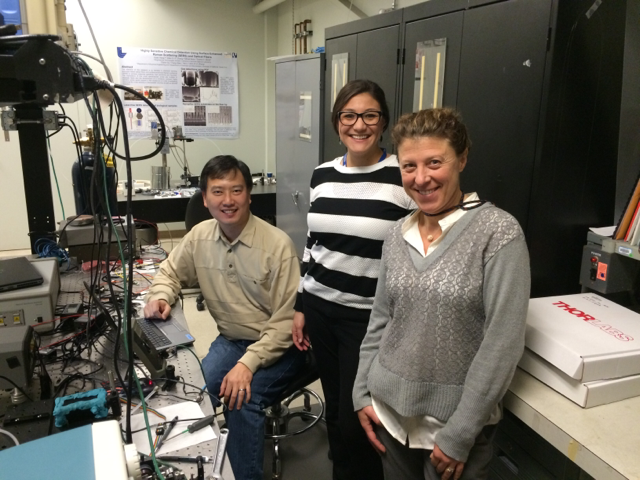Jessica Osuna (14-LW-079)
Abstract
Predicting future climate scenarios relies strongly on the understanding and quantification of the global carbon cycle, which in turn relies on understanding the tips and balances between land carbon sources and carbon sinks. While respiration and photosynthesis respond distinctly to environmental drivers, current techniques provide no specific information regarding the sensitivities of different carbon fluxes to a changing environment. Our goal with this project is to quantify the photosynthesis and respiration partitioning of net ecosystem carbon dioxide (CO2) exchange, and collect measurements of carbon and oxygen isotopes at high spatial and temporal frequency with a miniature tunable diode-laser sensor employing absorption spectroscopy developed at LLNL. Easily deployable isotope sensors are needed to understand how fluxes of carbon will change with changing climate. Our miniature tunable diode laser reduces cost, infrastructure, and power compared to commercially available sensors and enables increased sampling frequency. The instrument will be fully tested and then deployed to LLNL's Site 300 and the AmeriFlux Wind River Field Station in Washington to measure partitioned CO2 fluxes.
We expect to refine a miniature tunable diode laser capable of measuring the stable isotopes of carbon and oxygen in CO2 in situ at 10 Hz or greater at a precision sufficient to detect small diurnal variations in varying CO2 isotope compositions. We will demonstrate the instrument in situ alongside commercially available instruments. Most importantly, this project will reveal the contribution of photosynthesis and respiration to the net ecosystem CO2 exchange via isotopes at a forest and an annual grassland, as well as how these contributions vary with respect to time, space, and environmental drivers. The mobility of the sensors allows for measurements of canopy storage and lateral advection of CO2 fluxes, neither of which is currently measured at either site.
Mission Relevance
Terrestrial carbon science is widely thought to be an uncertainty in the global carbon budget. Success of the proposed isotope sensor would provide a mechanism to quantifying the land carbon balance, and more importantly, to understanding vulnerabilities and sources of major greenhouse gases under climate change, supportive of the Laboratory's strategic focus area in energy and climate security.
FY15 Accomplishments and Results
In FY15 we (1) analyzed all sensor data to determine the optimal operation for maximum signal-to-noise ratio; (2) investigated methods to normalize the sensor signal because of laser drift during extended measurements; (3) received a replacement for the inoperative vertical-cavity, surface-emitting laser (a 2,012-nm laser for bulk CO2 detection); and (4) began characterization of the laser to determine the relevant current calibration and power curve.






